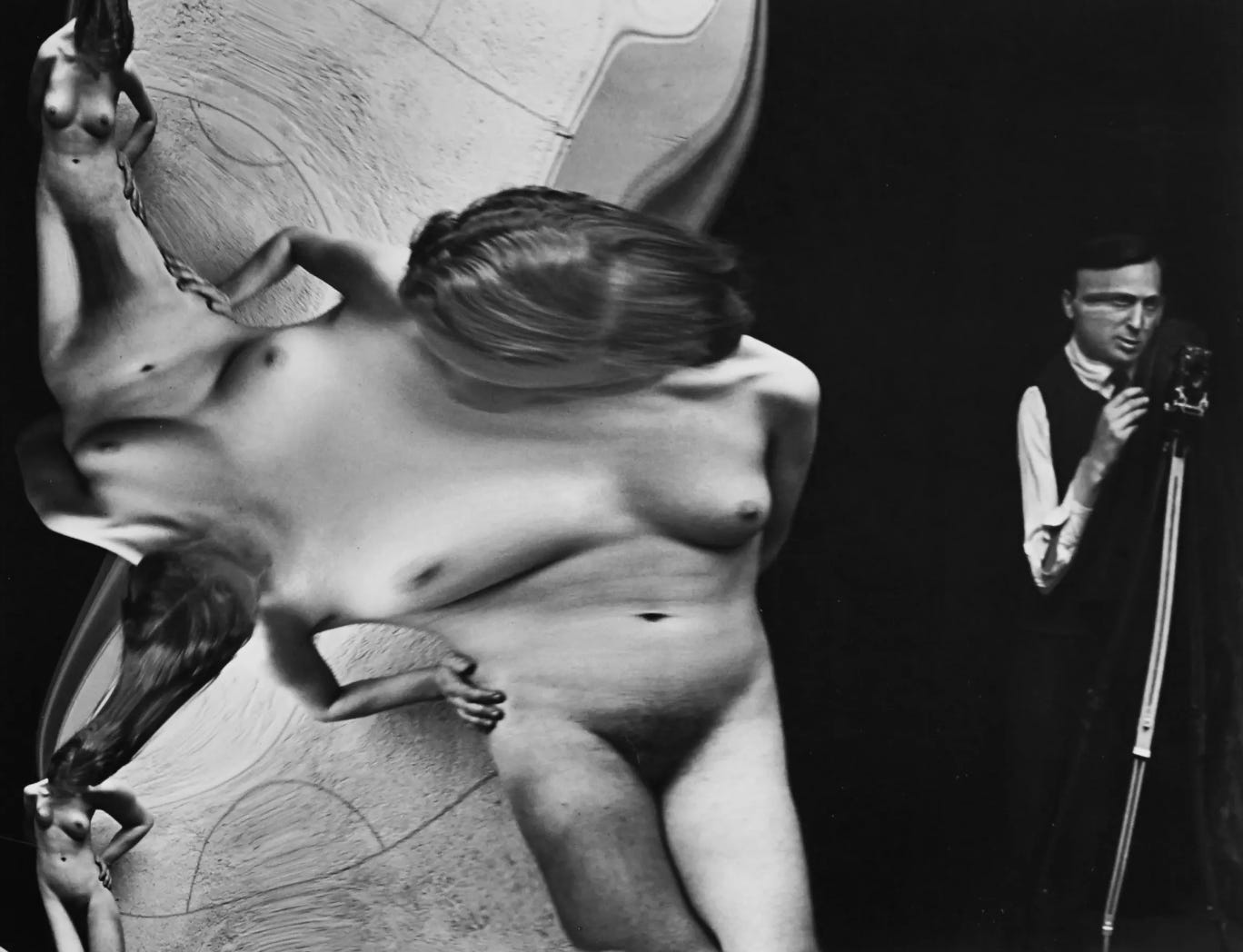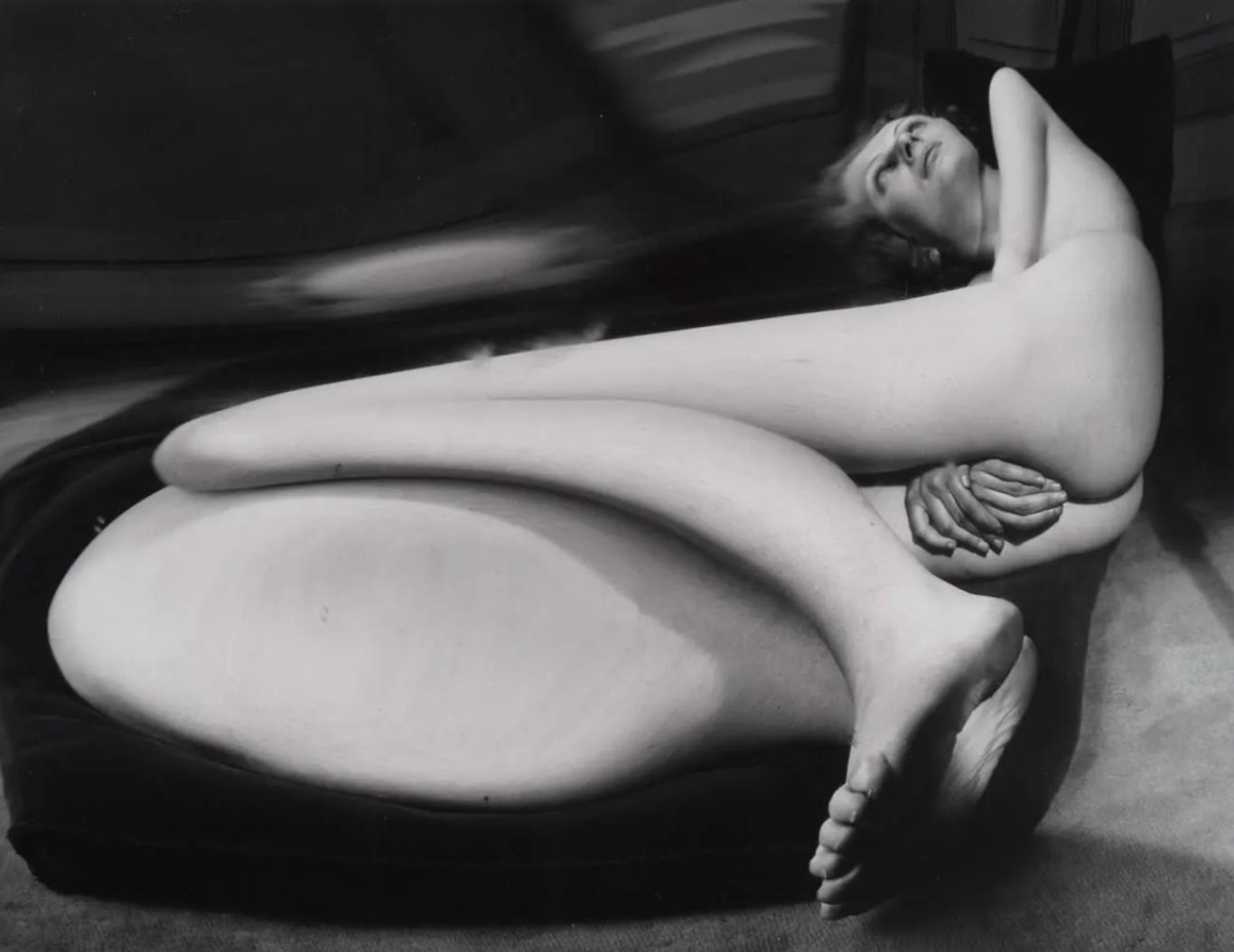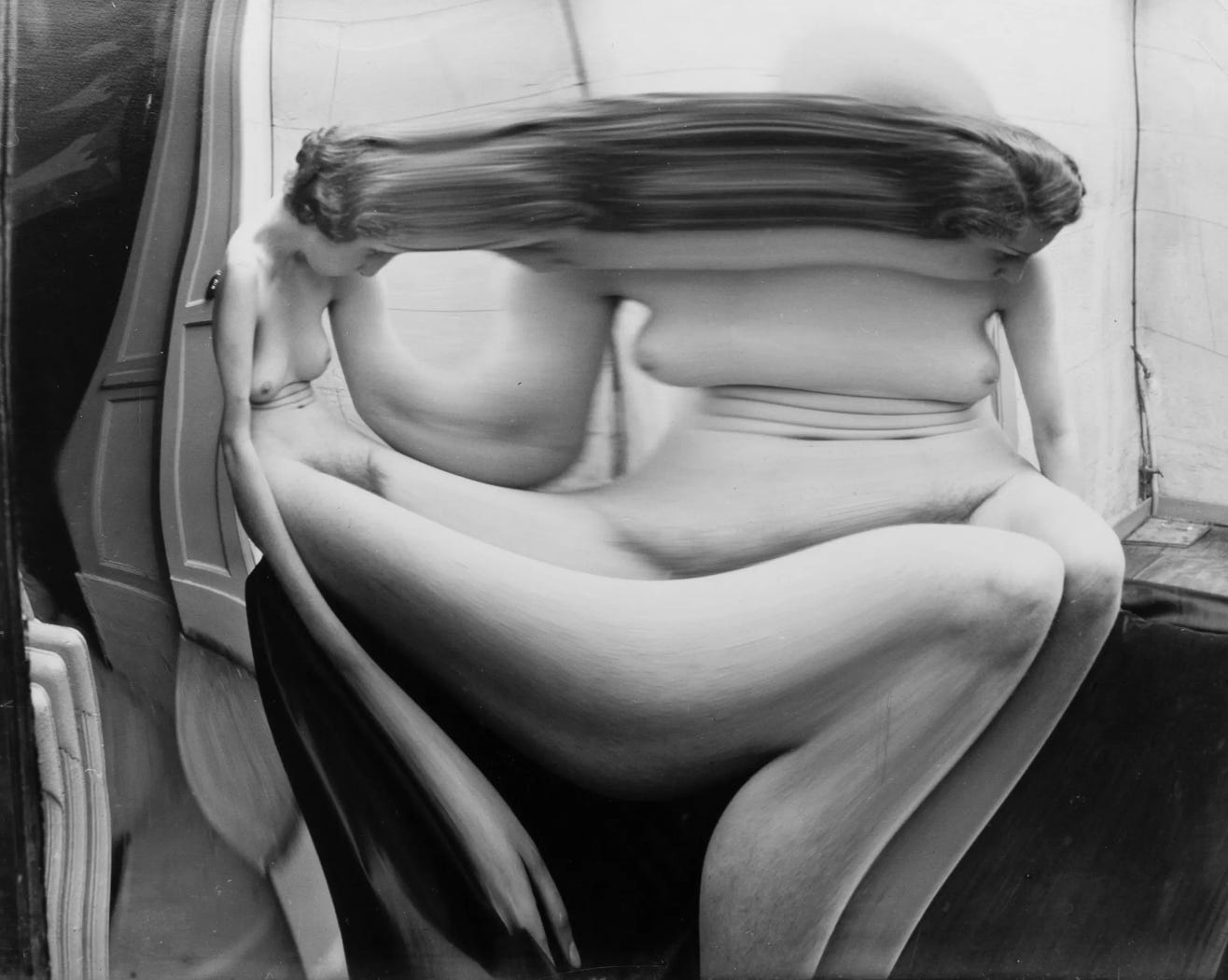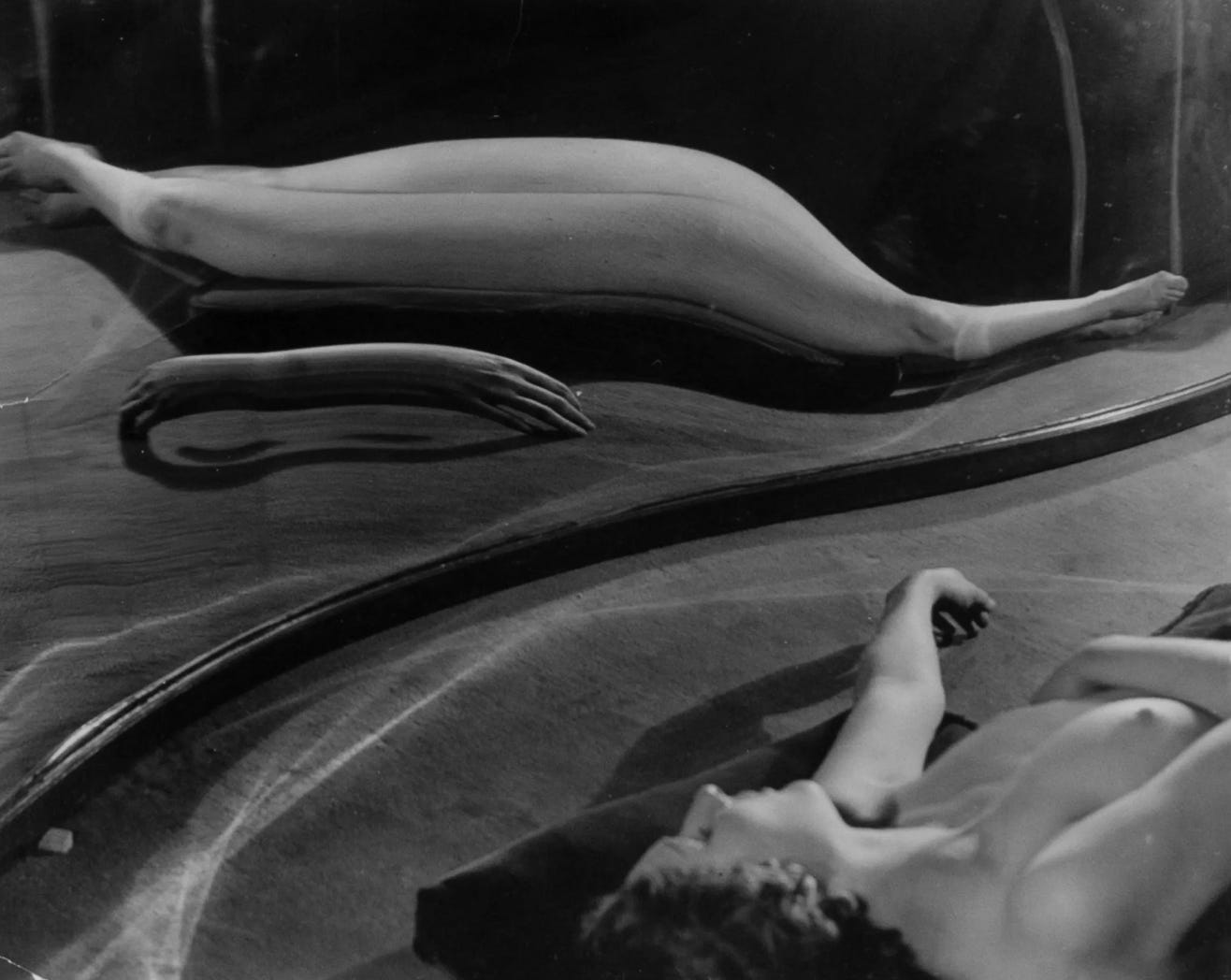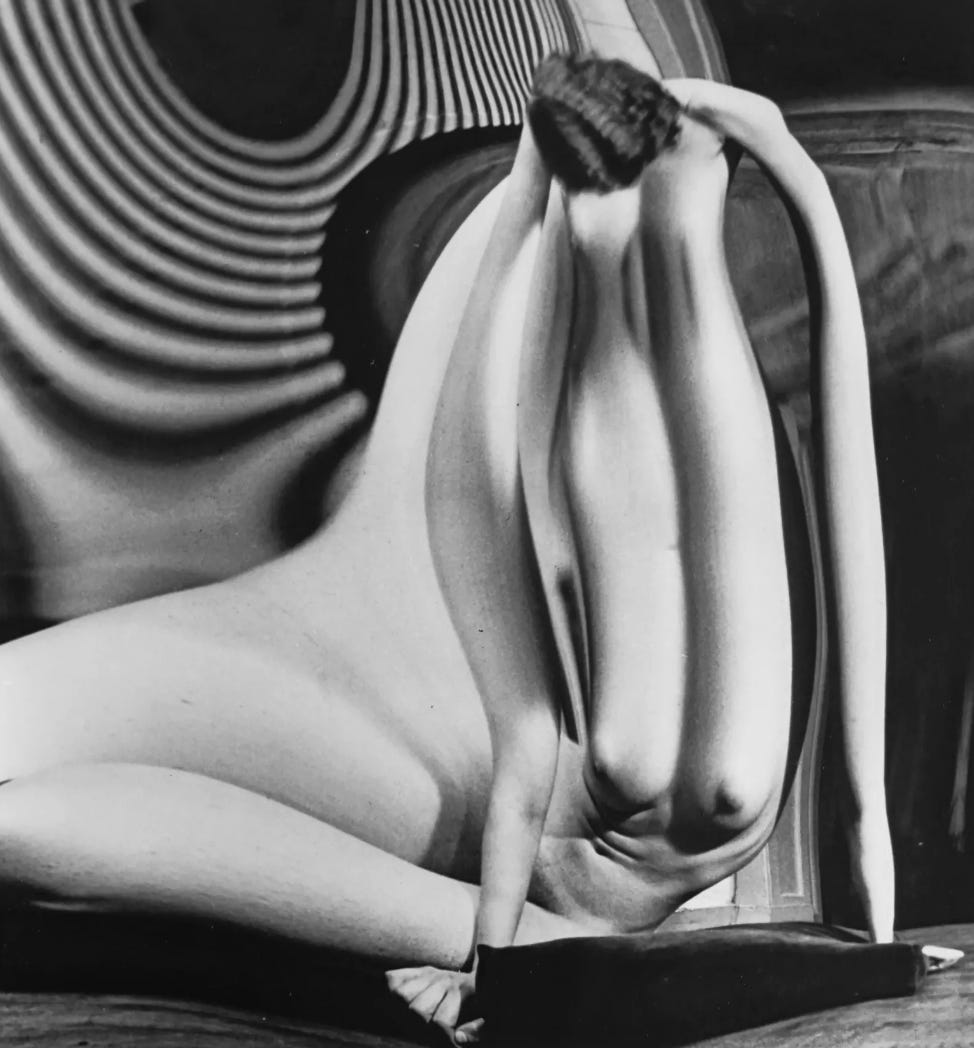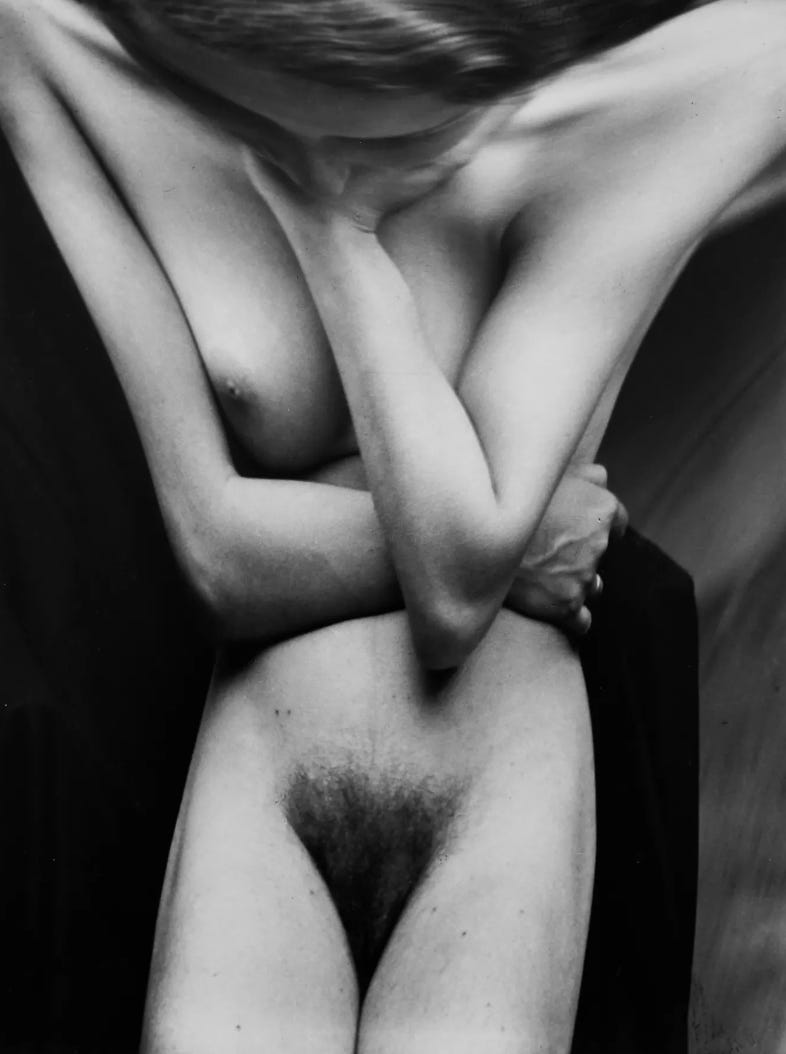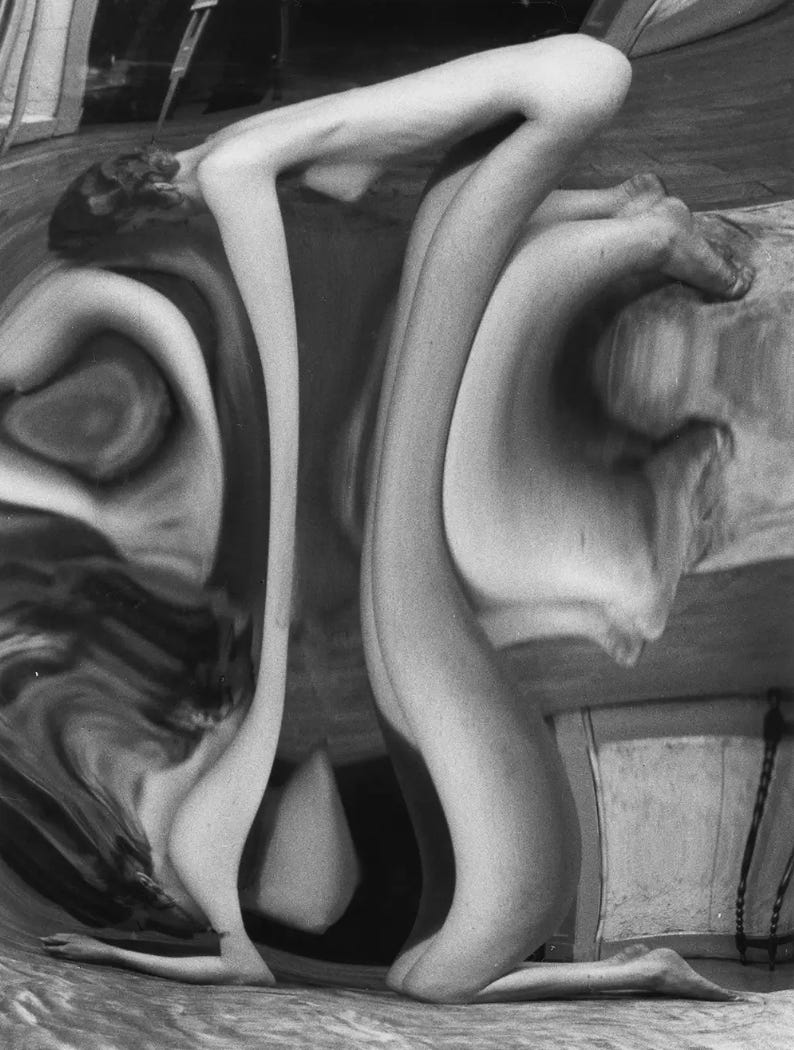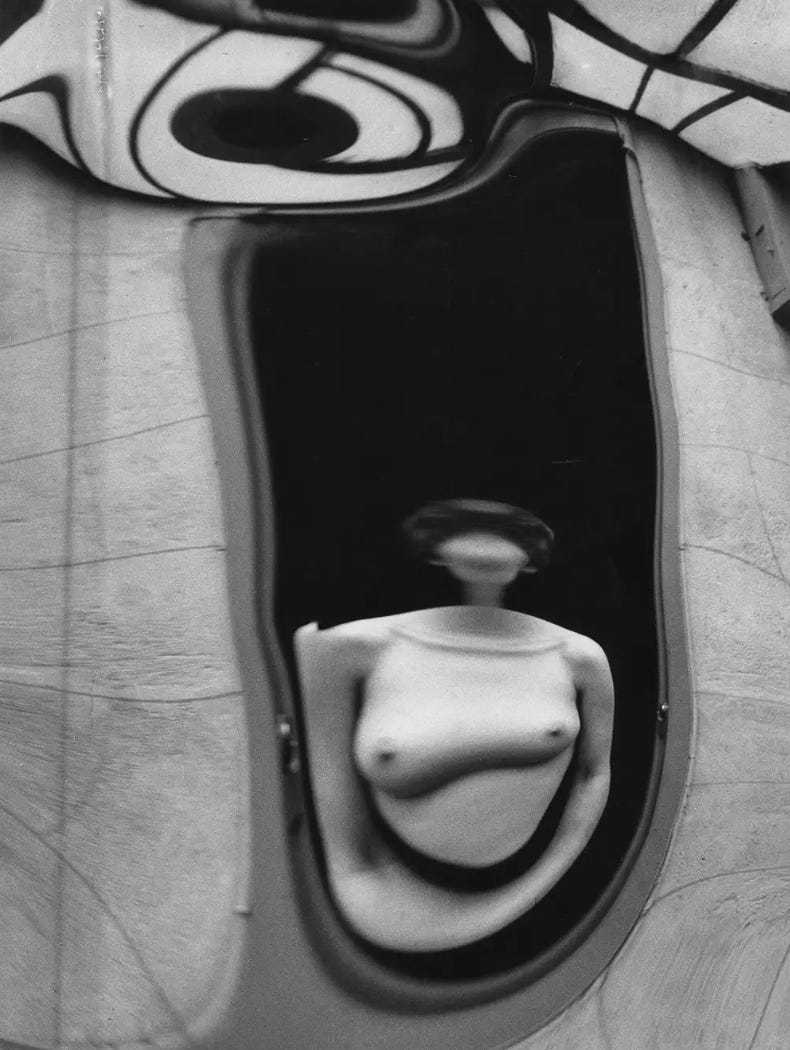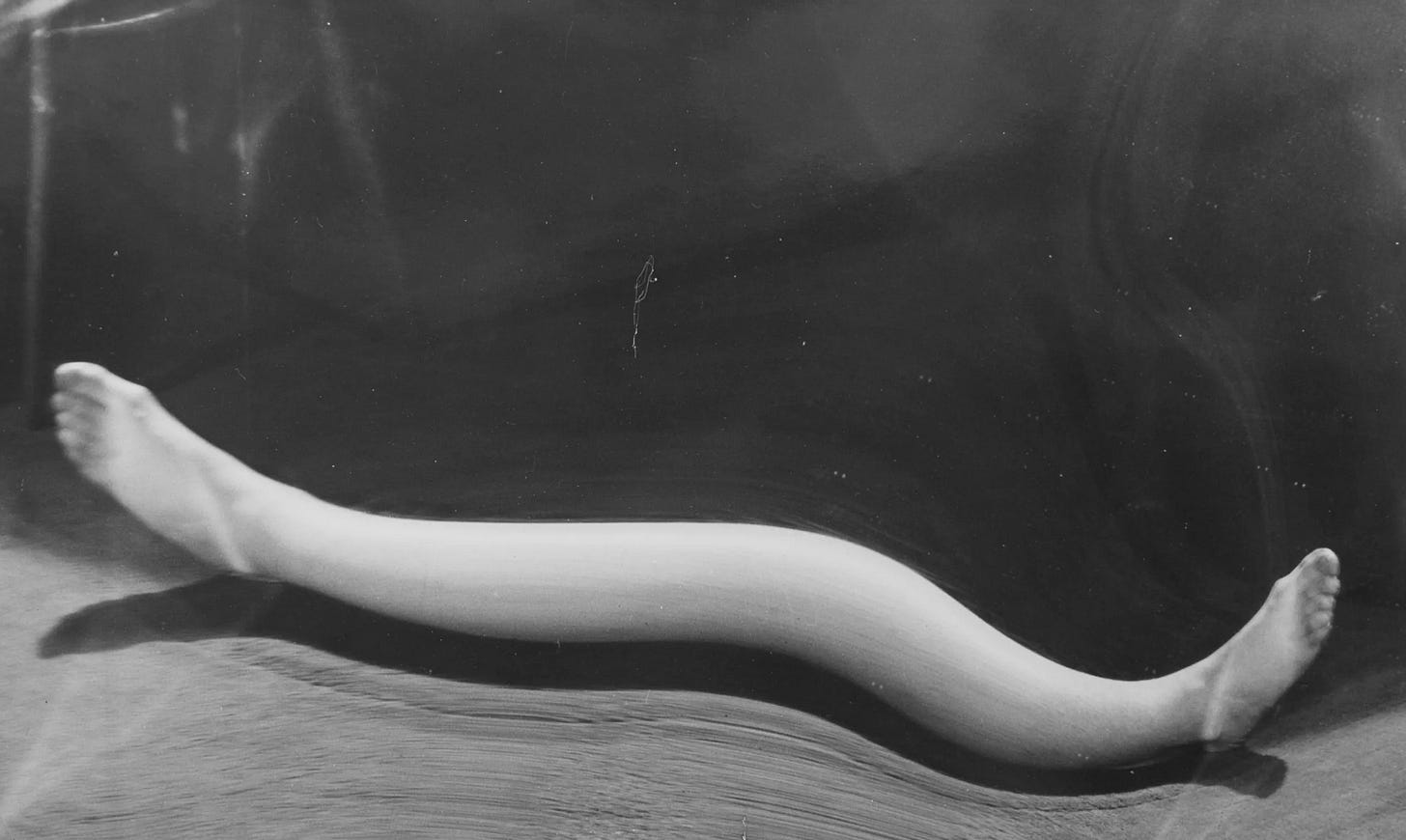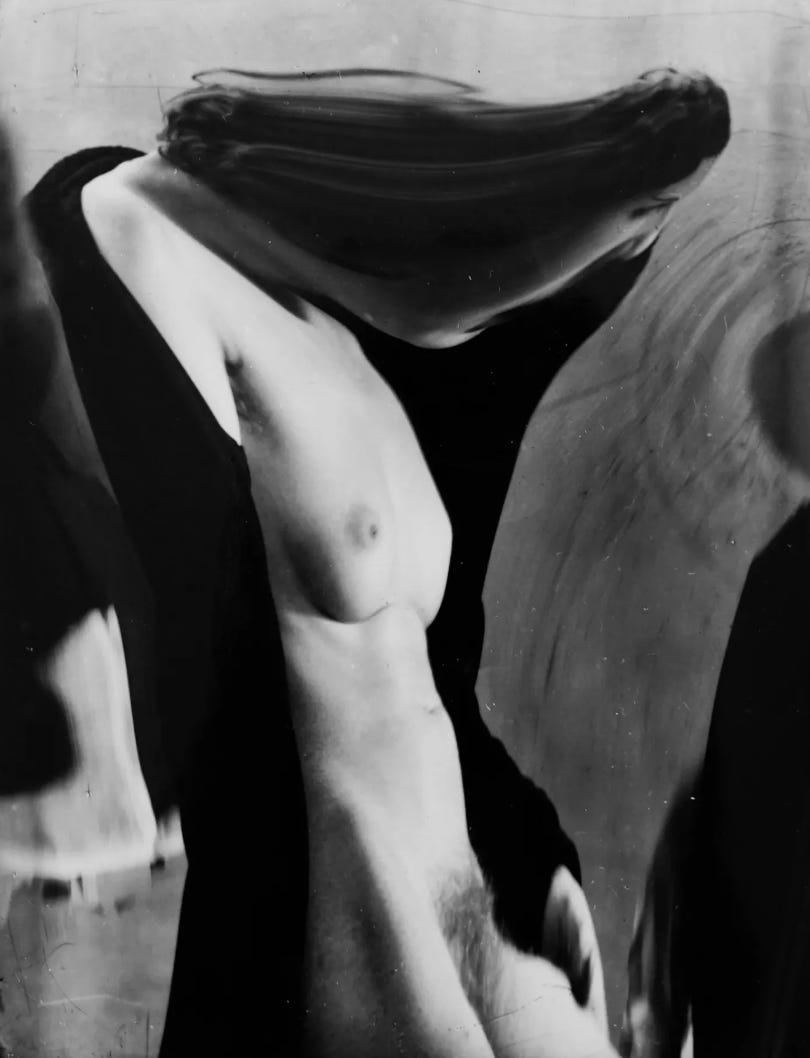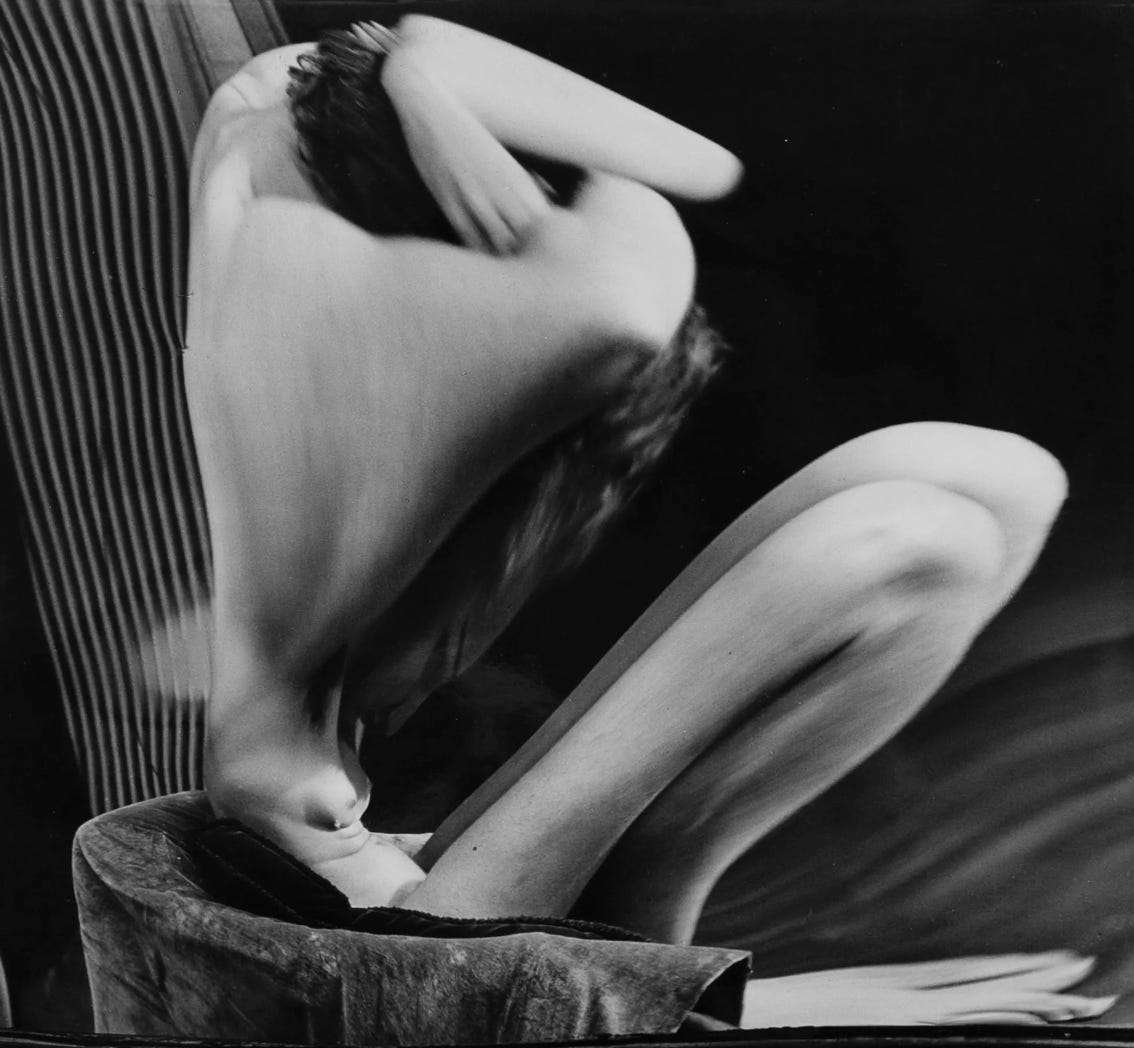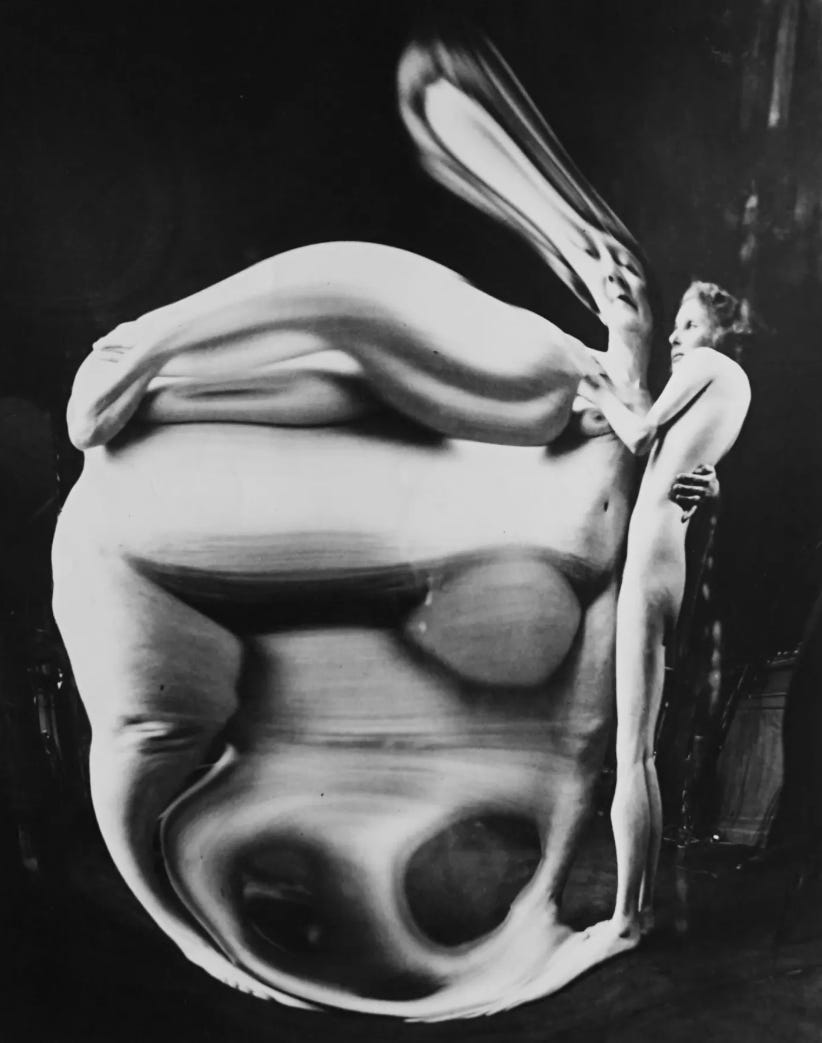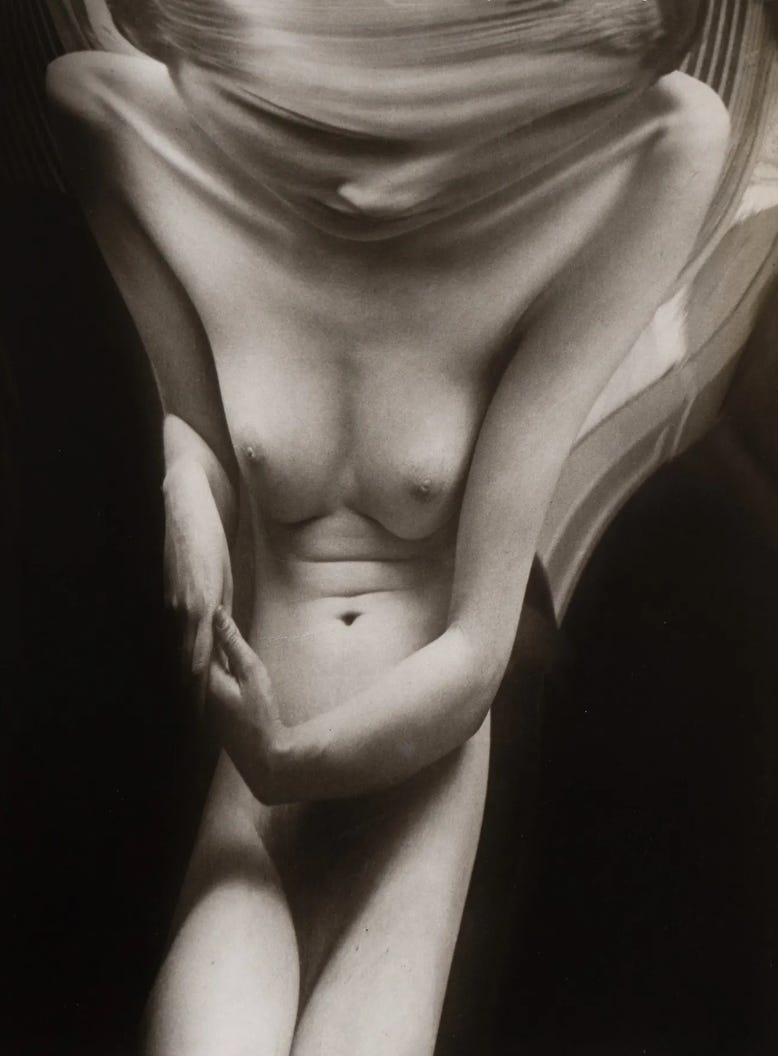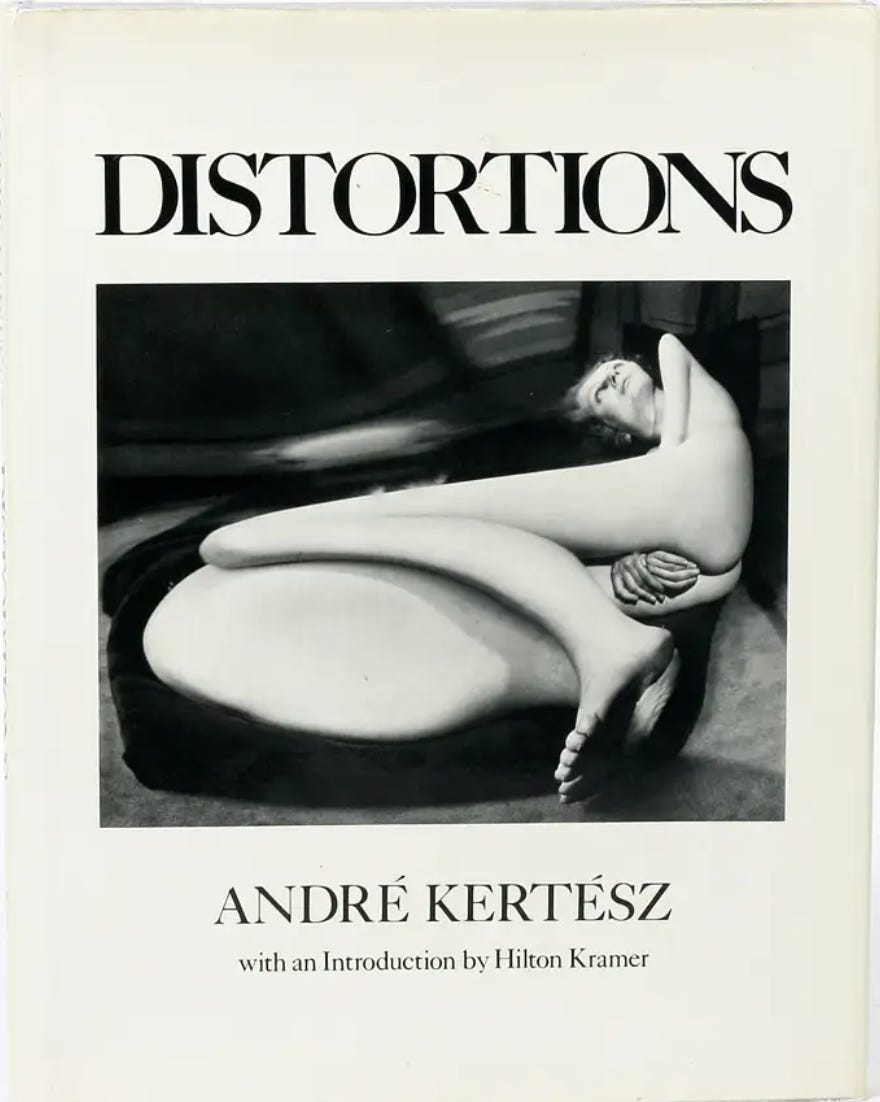André Kertész was born in Budapest, Hungary in 1894. He bought his first camera with his earnings as a stock exchange clerk, but had little time to develop his craft before he was drafted in Austria-Hungary in 1914. After World War I, Kertész settled back into his former life in Budapest. In 1925, he moved to Paris, where his career as an artist finally began. In 1928, Kertész’s work was exhibited alongside Man Ray, associating him with Dada & Surrealism.
Although Kertész had long been interested in mirrors, reflections, & the idea of distorting the human figure, he did not explore these concepts photographically until 1933, when the French magazine, Le Sourire, commissioned him to make a series of figure studies. Using several mirrors, including a funhouse mirror from a Parisian amusement park, Kertész, who had never photographed nudes before, spent four weeks making about two hundred negatives. The series resulted in a collection of beautiful & haunting warped nudes.
The book Distortions, published in 1977, includes 120 of Kertész’s warped nude photographs. Hilton Kramer introduces the book,
“For a long time it was thought that the bulk of the Distortions were permanently lost to us. The original glass-plate negatives had suffered severe and disfiguring oxidation, and technicians despaired at the task of restoring them. But the work has now been done, and Kertész’s remarkable achievement is now published in full for the first time--an achievement certain to influence photography, to bring us pleasure, and to revise our understanding of the visual art of our time.”





